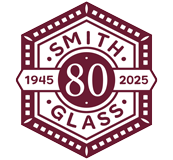Skylights are a great way to bring natural daylighting and an open, airy feel to any room. Today’s modern skylights are a far cry from the leaky old, single pane, plastic bubbles of the past. While most are still mounted on a curb in the roof, more sophisticated models are installed with your roof framing incorporating natural wood on the interior and other options like tinted glass or decorative blinds.
Oregon’s rainy climate contributes to the myth that, over time, all skylights will leak. While it’s true that leaks have occurred, most are the result of failed installations rather than the skylight itself. For this reason, it’s best to leave the installation to professionals. However, with an understanding of roofing components and flashings systems, a proper do-it-yourself installation isn’t difficult to achieve.
There are several design considerations when deciding on the location for a skylight. The pitch and direction of the roof will determine how much sunlight and heat will enter a space. West and south facing skylights will let in more light than those facing north. Also, one skylight may be enough to lighten a dark staircase, but you may want to add a bank of skylights in your kitchen to really brighten the space.
If you’re considering skylights on a second floor or loft area, an operating skylight may be a good choice. Since heat rises, the upper floors of homes can get warm in the spring and summer months. An operable skylight that allows warm air to escape will help keep that area more comfortable. Usually, a small motor is attached to the skylight and wired into a wall switch, so you can open them with out a long pole or ladder. Built in moisture sensors and thermostats will automatically close them if it starts to rain or if the room reaches a certain temperature to remove any guesswork.
Contact us for more information or to get a quote for a skylight.
